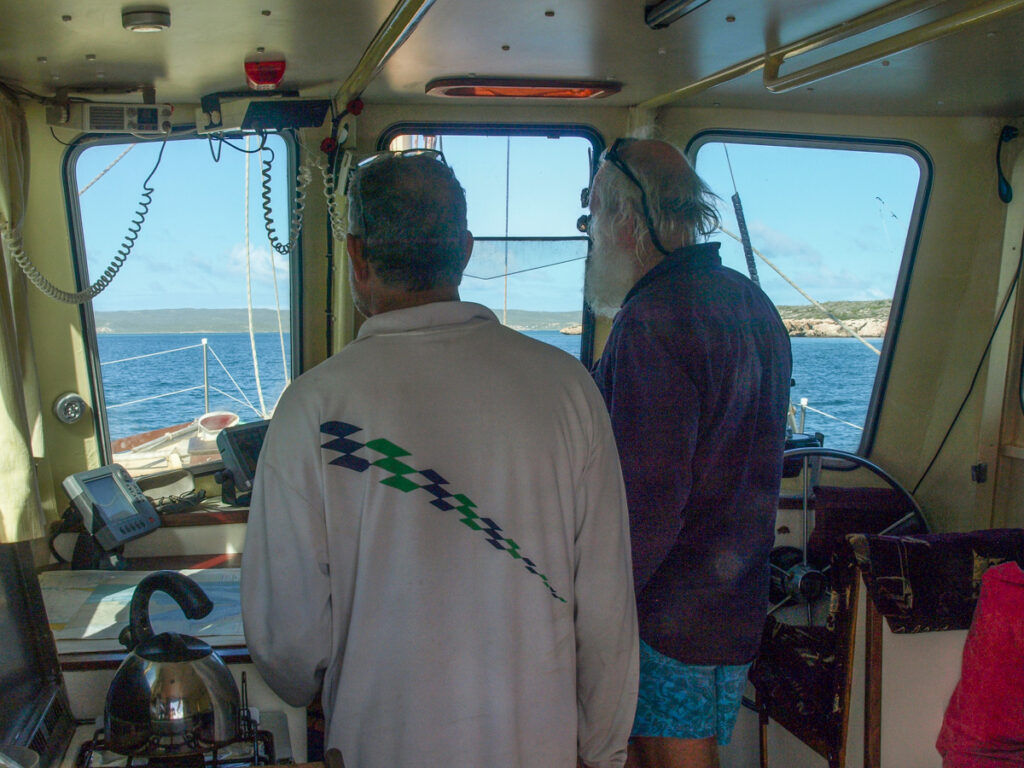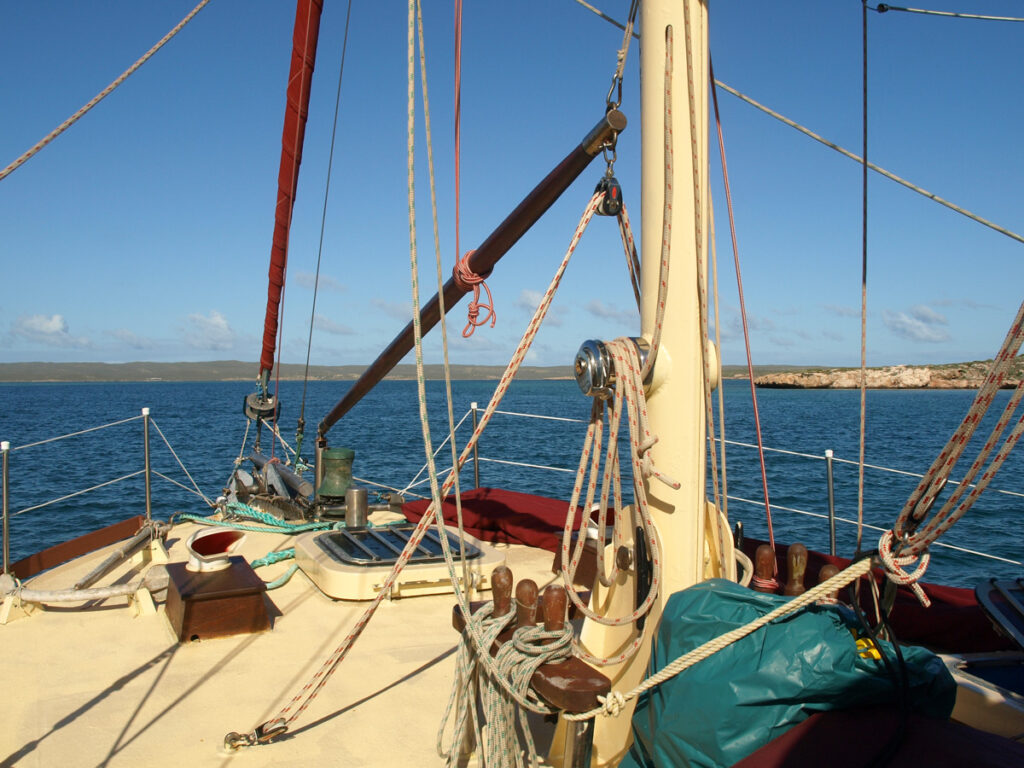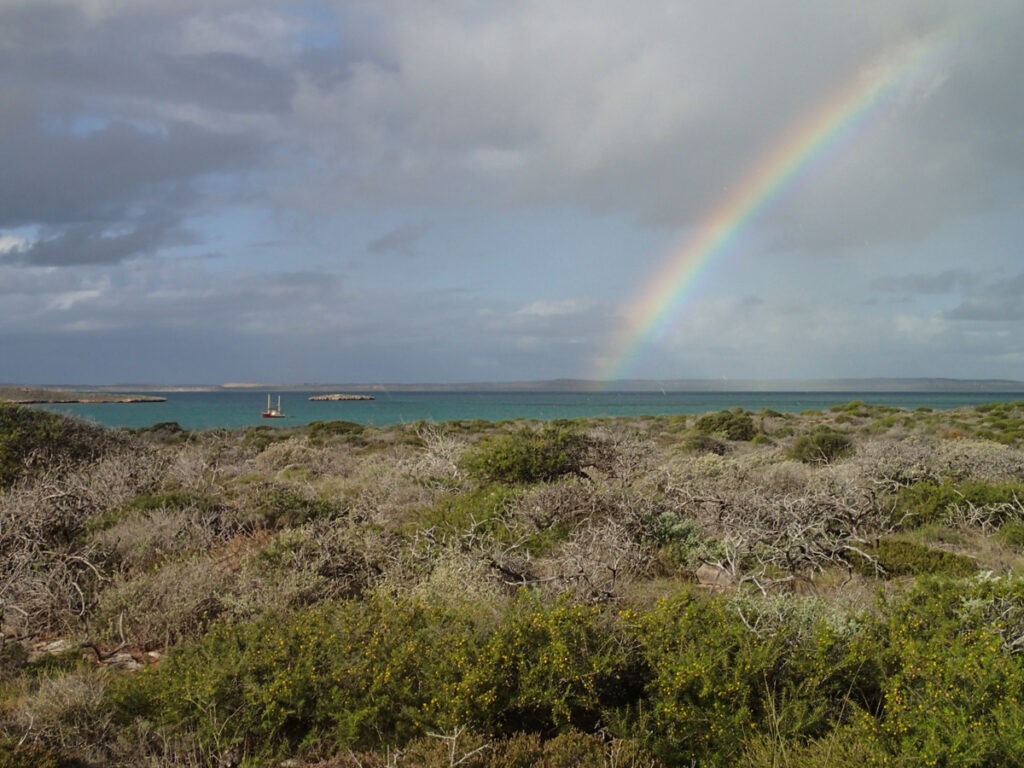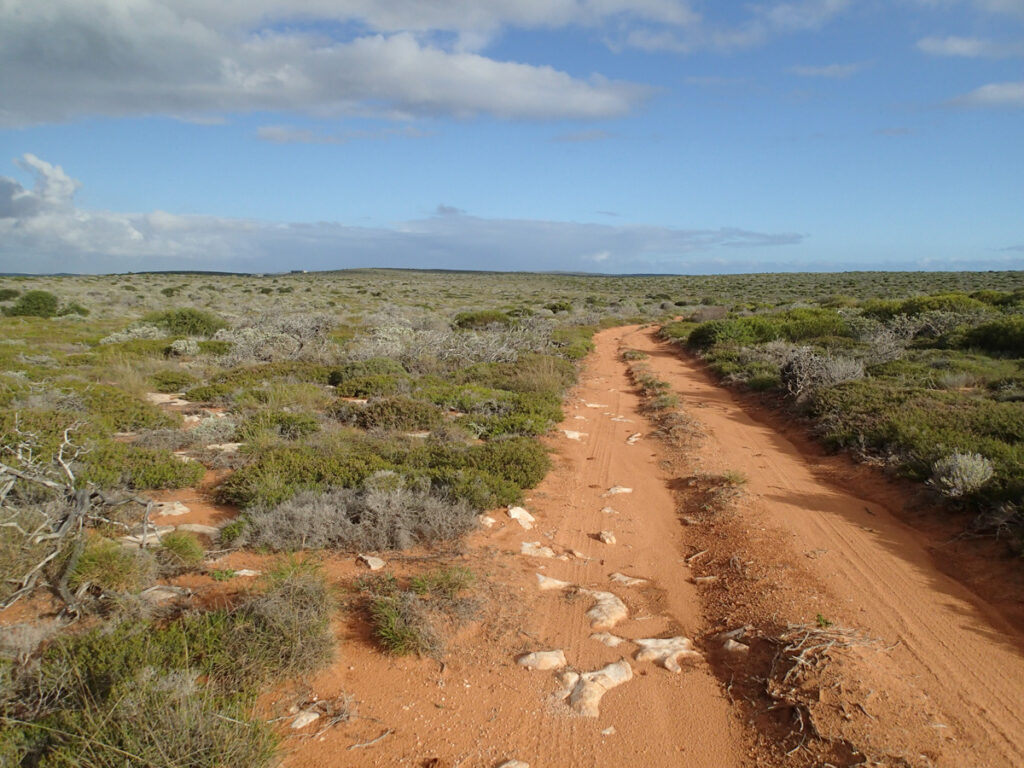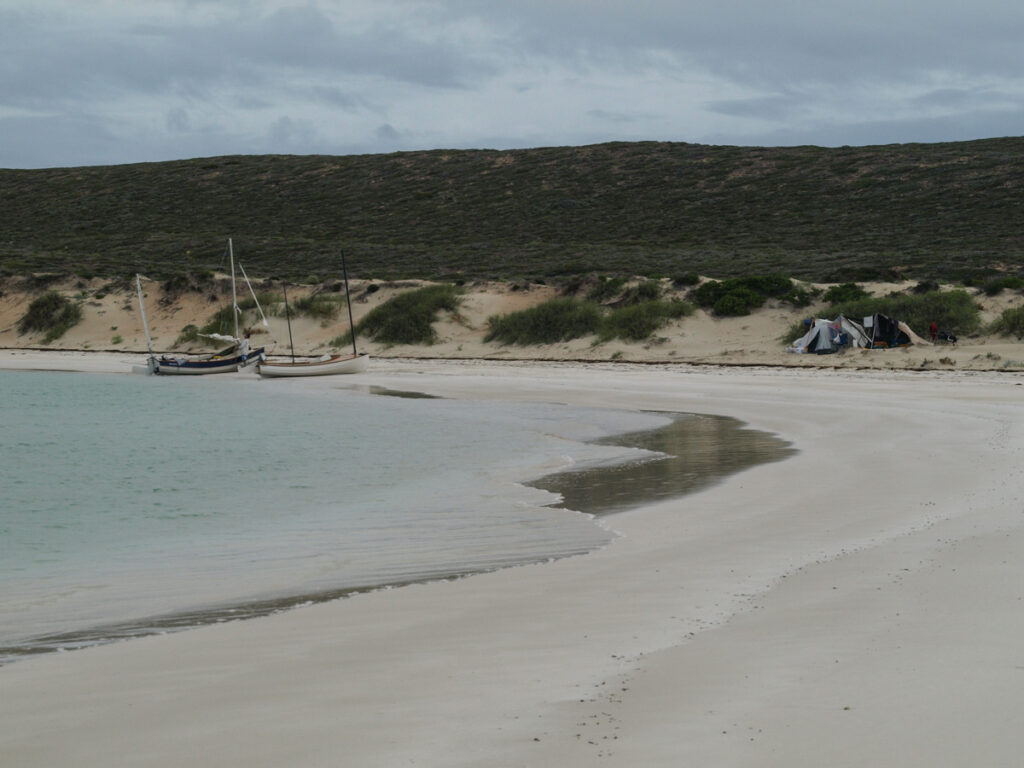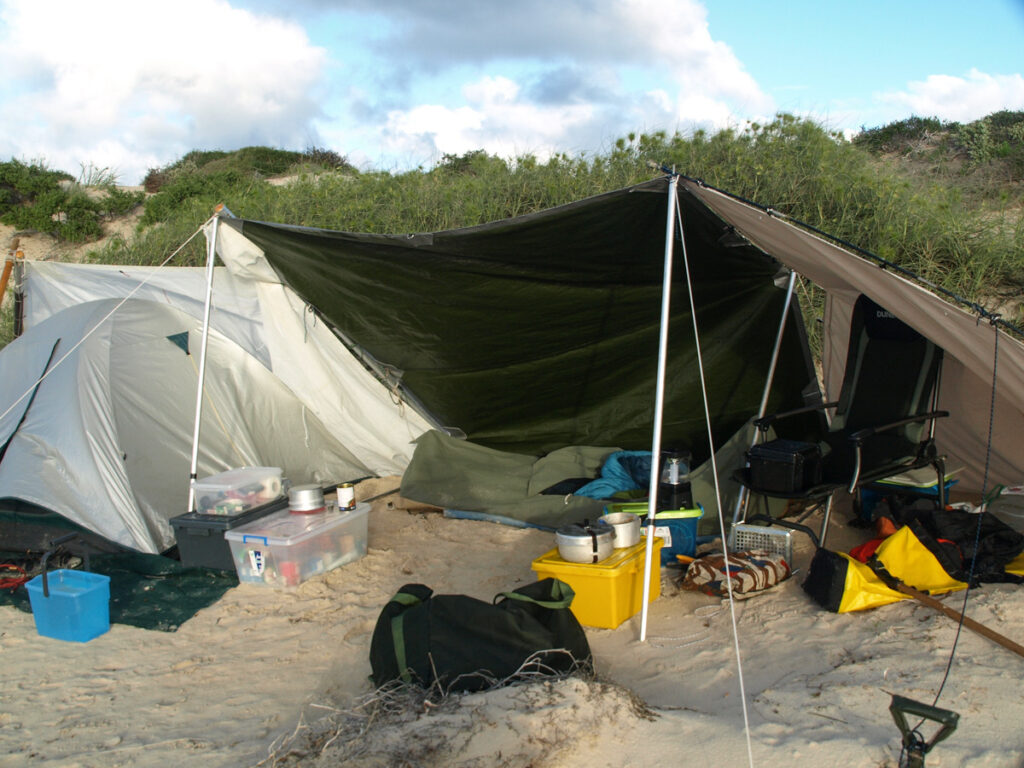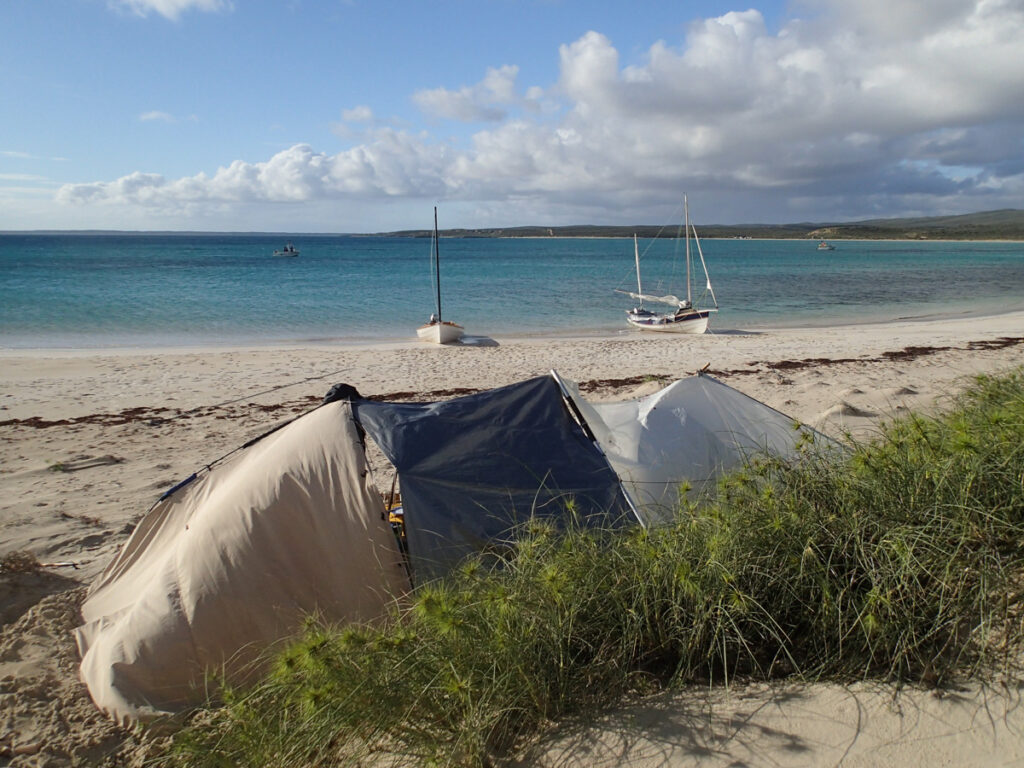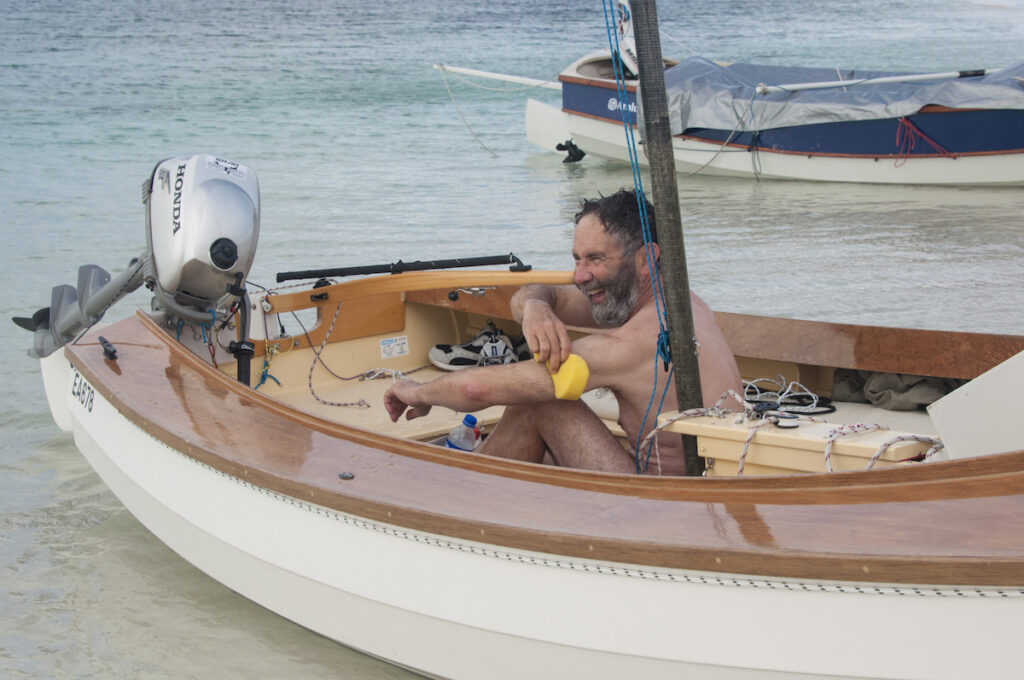The following morning Don reappeared to give us an updated weather forecast and to invite us out for a cruise to catch some fish out near Steep Point. The forecast meant that we had to spend another day where we were. Sunday Island Bay provided perfect shelter from the current northerly wind whereas Shelter Bay, our next destination, would be far from sheltered. However, on Sunday, when the wind was to go southwest, Sunday Island Bay would no longer be sheltered but Shelter Bay would. Got that?
Seeing Don carefully guide his vessel Escapee out through the channel constantly attending to his depth sounder made us appreciated the advantage of dinghy cruising. We were free to wander and explore where we wished with almost no regard to the water depth. Larger boats were all too often kept well away from the shore by their draft. However, as Don proudly showed us over the superbly maintained Escapee we could see that she was the perfect vessel for a sea gypsy like Don who would routinely spend months aboard his boat in complete self sufficiency. Also, you would stay warm and dry no matter what the weather, thereby avoiding the main disadvantage of dinghy cruising. It was great chatting to Don and we eagerly picked at what we could of his wealth of experience from years of cruising the West Australian coast. We spent quite some time looking at charts and discussing the possibility of cruising the Abrolhos.
Our cruise took us past Shelter Bay giving us a handy preview of the ground we would need to cover later ourselves. The fishing was mixed, we caught a very fine mackerel and were looking forward to an excellent lunchtime BBQ but just when we thought the fine creature was dead, and we were not looking, it slipped out through a scupper. Unfortunately, our attempts to catch a replacement were unsuccessful. Back at camp after a slightly sad lunch of tinned tuna we went exploring on the island. Most of the vegetation grows no higher than your knees and walking cross country is not much harder than walking along a track.
The following morning we slipped out of the bay under a light northerly and also a light drizzle, fortunately it did not persist for too long. We did not have far to go and we gently cruised past the rocky coastline sitting contentedly in our boats. As we approached Cape Ransonnet, the southern most point of Dirk Hartog Island, the wind filled in from the southwest and we hardened the sheets to tack our way up to the spot on Shelter Bay that we had picked out with Don the previous day. We had timed our run perfectly. We beached our boats and set to work establishing our camp under an increasingly threatening sky. With the experience of Tetradon loop fresh in our minds we were determined to be as well prepared as we could. I brought my mainsail ashore and with one of Paul’s oars rigged it up as a lean-to shelter to protect my tent. Next to this we had our tarp lean-to, and then onto this Paul reconfigured his boat tent and added it as an annex. Our camp would have done the set of Castaway proud. And so it was that evening, as the wind howled and the rain pelted down, that we sat quite comfortably under our tarp, warm and mostly dry, while we consumed whatever it was in the random tins that we had selected for dinner. This time Denham airport recorded 24mm of rain.
The following morning the bulk of the rain had passed but every now and then the odd shower would come through to annoy us. Gradually the patches of blue sky increased and by late morning I decided it was warm enough for my bath. The rain had deposited a useful amount of fresh water in my boat and it was too good to waste. Stripping off I sat down in the flooded cockpit of my Navigator, soaped myself up, and had a lovely cold bath!
The wind was still blowing strongly from the south and we would need to camp here for another night. We spent the rest of the day exploring the bay and inspecting the fishing camps that had been set up. These camps were major logistical achievements. To set one up requires two teams. One team drives in with trailers heavily laden with supplies, water, tents, power generation equipment, and beer. This takes about three hours on a rough 4WD track. Meanwhile the other team with the fishing boats drives up to Denham, launches the boats, and then motors them about 60km back down to Shelter Bay.
